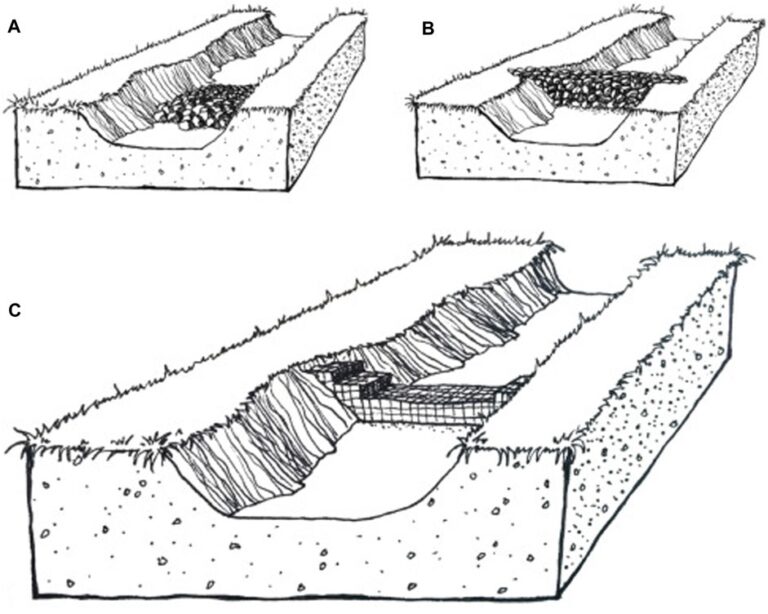The article discusses the extensive land degradation in the Sky Islands of Arizona and northern Mexico, focusing on the impacts of climate change and habitat health. It highlights the importance of riparian areas and waterways for biodiversity, especially in arid regions where they support a significant proportion of wildlife.
The degradation is driven by factors such as overgrazing, poor soil stability, and water misuse, leading to a decline in ecosystem services essential for human well-being and biodiversity. To combat this, the article advocates for nature-based solutions (NbS) like rock detention structures (RDS), which have been used by Indigenous peoples for centuries. RDS help mitigate erosion, enhance vegetation recovery, and improve water infiltration, thereby restoring ecosystems.
The authors present case studies from four sites in the region, demonstrating the positive effects of RDS installations on stream flow, sedimentation, biodiversity, and resilience to drought and flooding. They highlight the potential for RDS to serve as a low-cost, easily deployable restoration method that encourages community engagement and stewardship.
The study aims to identify the societal impacts of RDS and addresses barriers to broader implementation, such as limited awareness and lack of financing. It calls for more research on the ecological benefits of RDS and suggests leveraging carbon markets to fund restoration projects.
In conclusion, the article emphasizes the potential of RDS as a viable NbS for addressing the ecological and societal challenges posed by climate change while promoting sustainable development in arid regions.


